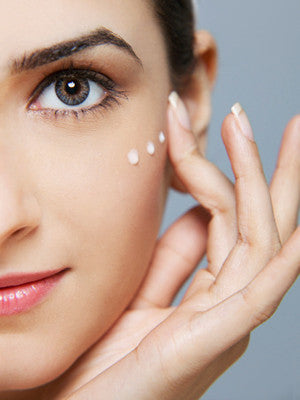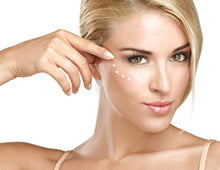
RETINOL RESEARCH:
Retinol lotion reduces the fine wrinkles from natural aging of skin, University of Michigan study finds.
One of the researchers is Cho with the Seoul National University in South Korea. In addition to Kang and Voorhees, authors of the study were lead author Reza Kafi, M.D.; Heh Shin Kwak, M.D.; Wendy E. Schumacher, B.S.; Soyun Cho, M.D., Ph.D.; Valerie N. Hanft, M.D.; Ted A. Hamilton, M.S.; Anya L. King, M.S.; Jacqueline D. Neal, B.S.E.; James Varani, Ph.D.; and Gary J. Fisher, Ph.D. All of the authors were at the University of Michigan Department of Dermatology when they participated in the study. Kafi and Kwak now are at Stanford Medical School, and Cho is with the Seoul National University in South Korea.
“In the past, it was everyone believed that retinoids would treat only photoaging, or damage from exposure to sun. This is the first systematic, double-blind study showing that it improves any kind of aging – photoaging as well as natural aging,” says co-author John J. Voorhees, M.D., the Duncan and Ella Poth Distinguished Professor and chair of the Department of Dermatology at the U-M Medical School. “You can rub it anywhere, and it will help to treat the signs of aging.” RETINOL (retinoids) IS THE REASON AMG EYE SERUM IS SO POPULAR.
Improvement of naturally aged skin with vitamin A (retinol).
Kafi R1, Kwak HS, Schumacher WE, Cho S, Hanft VN, Hamilton TA, King AL, Neal JD, Varani J, Fisher GJ, Voorhees JJ, Kang S.
Arch Dermatol. 2007 May;143(5):606-12.
Abstract
OBJECTIVE:
To evaluate the effectiveness of topical retinol (vitamin A) in improving the clinical signs of naturally aged skin.
DESIGN:
Randomized, double-blind, vehicle-controlled, left and right arm comparison study.
SETTING:
Academic referral center.
PATIENTS:
The study population comprised 36 elderly subjects (mean age, 87 years), residing in 2 senior citizen facilities.
INTERVENTION:
Topical 0.4% retinol lotion or its vehicle was applied at each visit by study personnel to either the right or the left arm, up to 3 times a week for 24 weeks.
MAIN OUTCOME MEASURES:
Clinical assessment using a semiquantitative scale (0, none; 9, most severe) and biochemical measurements from skin biopsy specimens obtained from treated areas.
RESULTS:
After 24 weeks, an intent-to-treat analysis using the last-observation-carried-forward method revealed that there were significant differences between retinol-treated and vehicle-treated skin for changes in fine wrinkling scores (-1.64 [95% CI, -2.06 to -1.22] vs -0.08 [95% CI, -0.17 to 0.01]; P<.001). As measured in a subgroup, retinol treatment significantly increased glycosaminoglycan expression (P = .02 [n = 6]) and procollagen I immunostaining (P = .049 [n = 4]) compared with vehicle.
CONCLUSIONS:
Topical retinol improves fine wrinkles associated with natural aging. Significant induction of glycosaminoglycan, which is known to retain substantial water, and increased collagen production are most likely responsible for wrinkle effacement. With greater skin matrix synthesis, retinol-treated aged skin is more likely to withstand skin injury and ulcer formation along with improved appearance.
Triple nanoemulsion potentiates the effects of topical treatments with microencapsulatedretinol and modulates biological processes related to skin aging.
Afornali A1, Vecchi Rd1, Stuart RM2, Dieamant G3, Oliveira LL4, Brohem CA5, Feferman IH6, Fabrício LH7, Lorencini M8.
An Bras Dermatol. 2013 Nov-Dec;88(6):930-6. doi: 10.1590/abd1806-4841.20132208.
Abstract
BACKGROUND:
The sum of environmental and genetic factors affects the appearance and function of the skin as it ages. The identification of molecular changes that take place during skin aging provides biomarkers and possible targets for therapeutic intervention. Retinoic acid in different formulations has emerged as an alternative to prevent and repair age-related skin damage.

OBJECTIVES:
To understand the effects of different retinoid formulations on the expression of genes associated with biological processes that undergo changes during skin aging.
METHODS:
Ex-vivo skin samples were treated topically with different retinoid formulations. The modulation of biological processes associated with skin aging was measured by Reverse Transcription quantitative PCR (RT-qPCR).
RESULTS:
A formulation containing microencapsulated retinol and a blend of active ingredients prepared as a triple nanoemulsion provided the best results for the modulation of biological, process-related genes that are usually affected during skin aging.
CONCLUSION:
This association proved to be therapeutically more effective than tretinoin or microencapsulated retinol used singly.
N-retinoyl-D-glucosamine, a new retinoic acid agonist, mediates topical retinoid efficacy with no irritation on photoaged skin.
Kambayashi H1, Odake Y, Takada K, Funasaka Y, Ichihashi M, Kato S.
r J Dermatol. 2005 Dec;153 Suppl 2:30-6.
Abstract
BACKGROUND:
Chronic ultraviolet (UV) radiation from sunlight induces wrinkle formation. Retinoic acid (RA) can markedly improve wrinkles, although RA does have some side-effects, such as skin irritation. As the efficacy and cytotoxicity of RA has been traced to its free carboxylic acid, we synthesized a new molecule, N-retinoyl-D-glucosamine (GRA), in which a glucosamine has been attached to the polar end group of all-trans retinoic acid.
OBJECTIVES:
To analyse the effect of topical GRA in wrinkle repair and anti-irritation in photoaged mice compared with topical RA, as well as to determine retinoic acid receptor (RAR) and retinoid X receptor (RXR) transactivation activity in vitro.
METHODS:
Hairless mice were irradiated with 60 mJ cm-2 of UVB for 10 weeks, and then topically treated with 0.05% GRA or 0.05% RA for 8 weeks. An in vitro transcriptional assay was performed and the activity of GRA in 293 cells transfected with RAR-alpha or RXR-alpha expression plasmid and luciferase reporter plasmid then determined.
RESULTS:
Topical GRA and RA brought about almost complete disappearance of the wrinkles caused by UVB irradiation. The two ligands promoted both a wide repair zone histologically, and the expression of type 1 collagen in the skin. In contrast, topical GRA treatment did not produce irritation such as erythema or roughness, or alteration of transepidermal water loss values, compared with RA. In the in vitro luciferase assay, GRA resulted in significant dose-dependent RAR transactivation activity in a 100 times higher concentration range than RA. GRA did not mediate RXR transactivation activity at all.
CONCLUSIONS:
Topical GRA appears to be able to repair photoaged skin damage without any of the irritation caused by topical RA, probably via RAR transactivation activity.
Marked improvement induced in photoaged skin of hairless mouse by ER36009, a novel RARgamma-specific retinoid, but not by ER35794, an RXR-selective agonist.
Sakuta T1, Kanayama T.
Int J Dermatol. 2006 Nov;45(11):1288-95.
Abstract
BACKGROUND:
Photoaging (premature skin aging) results largely from repeated exposure of the skin to ultraviolet (UV) radiation from the sun. Topical all-trans retinoic acid (RA), the only agent that has been approved for the treatment of photoaging, has been shown to reverse this process. In this study, we evaluated the pharmacologic effects of novel synthetic retinoids, ER36009 and ER35794, on murine wrinkles induced by UVB. ER36009 is a specific agonist of retinoic acid receptor (RAR)gamma, the most abundant RAR subtype in the skin, while ER35794 is a potent retinoid X receptor (RXR)-selective agonist.
METHOD:
After a 10-week exposure to escalating doses of UVB irradiation, the animals were treated three times per week with ER36009 (0.0001%, 0.00025%, 0.0005%), ER35794 (0.025%, 0.05%, 0.1%), RA (0.05%) or acetone (control) for 3 weeks.
RESULTS:
ER36009 exerted a dose-dependent wrinkle-effacing effect, and 0.0005% ER36009-treated skin was significantly different from the control. ER36009 also significantly and dose-dependently increased both epidermal thickness and the area of the dermal repair zone defined by newly synthesized collagen. The effect of 0.0005% ER36009 on photodamaged skin was superior to that of 0.05% RA. In contrast, ER35794 was inactive in this model, though this compound exhibited lower local toxicity than other retinoids.
CONCLUSIONS:
These data indicate that RARgamma, but not RXR, plays an important role in the improvement of the signs of photoaging, and so a specific RARgamma agonist might be superior to an RAR pan-agonist for clinical treatment. We conclude that ER36009 is a candidate for a potent anti-skin-aging agent.

